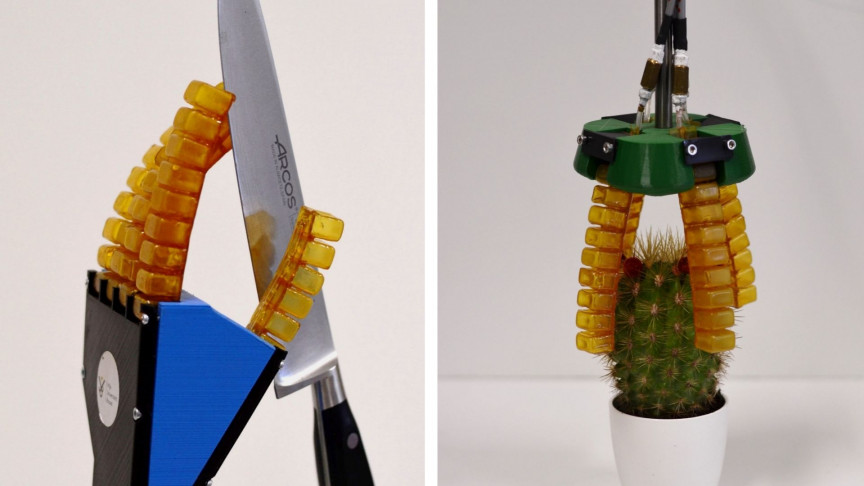There’s no doubt that self-healing materials have many benefits. One of the most notable ones is in the development of realistic artificial hands and other soft robotics applications.
Now, as part of the SHERO project, University of Cambridge researchers have produced low-cost salt and gelatine materials that can sense strain, temperature, and humidity through soft sensors and repair themselves at room temperature, according to a statement released by the institution Friday.
The breakthrough is set to revolutionize the field of robotics and perhaps a few other industries.
Self-healing materials
“Incorporating soft sensors into robotics allows us to get a lot more information from them, like how strain on our muscles allows our brains to get information about the state of our bodies,” said in the statement David Hardman from Cambridge’s Department of Engineering, the paper’s first author.
These new materials are different than their earlier counterparts because they don’t need to be heated to self-heal. They can also autonomously (without human interference) detect when they are damaged, proceed to temporarily heal themselves, and then resume their previous activities.
Cheap and easy to make
In their work, the researchers used printing sensors containing sodium chloride (salt) instead of carbon ink which means the resulting materials are cheap and easy to make (either by 3D printing or casting). They are also better than many existing alternatives due to their strength and stability and their ability to last a long time without drying out.
Last but not least, they are composed of easy-to-find, food-safe, materials.
“It’s a really good sensor considering how cheap and easy it is to make,” said co-author Dr. Thomas George-Thuruthel, also from the Department of Engineering. “We could make a whole robot out of gelatine and print the sensors wherever we need them.”
Since the materials bond so well with a variety of different other materials, they can easily be incorporated within many types of robotics. The researchers are now investigating additional uses for the self-healing materials such as artificial skins and wearables.
The study was published in the journal NPG Asia Materials.
Study abstract:
Soft sensing technologies have the potential to revolutionize wearable devices, haptic interfaces, and robotic systems. However, there are numerous challenges in the deployment of these devices due to their poor resilience, high energy consumption, and omnidirectional strain responsivity. This work reports the development of a versatile ionic gelatin-glycerol hydrogel for soft sensing applications. The resulting sensing device is inexpensive and easy to manufacture, is self-healable at room temperature, can undergo strains of up to 454%, presents stability over long periods of time, and is biocompatible and biodegradable. This material is ideal for strain sensing applications, with a linear correlation coefficient R2 = 0.9971 and a pressure-insensitive conduction mechanism. The experimental results show the applicability of ionic hydrogels for wearable devices and soft robotic technologies for strain, humidity, and temperature sensing while being able to partially self-heal at room temperature.
Credit: Source link




















